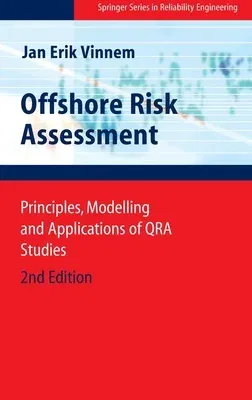Jan-Erik Vinnem
(Author)Offshore Risk Assessment: Principles, Modelling and Applications of Qra StudiesHardcover, 13 March 2007

Qty
1
Turbo
Ships in 2 - 3 days
In Stock
Free Delivery
Cash on Delivery
15 Days
Free Returns
Secure Checkout

Part of Series
Springer Reliability Engineering
Part of Series
Springer Series in Reliability Engineering
Print Length
578 pages
Language
English
Publisher
Springer
Date Published
13 Mar 2007
ISBN-10
1846287162
ISBN-13
9781846287169
Description
Product Details
Author:
Book Format:
Hardcover
Country of Origin:
NL
Date Published:
13 March 2007
Dimensions:
23.39 x
15.6 x
3.33 cm
ISBN-10:
1846287162
ISBN-13:
9781846287169
Language:
English
Location:
London
Pages:
578
Publisher:
Weight:
1016.05 gm